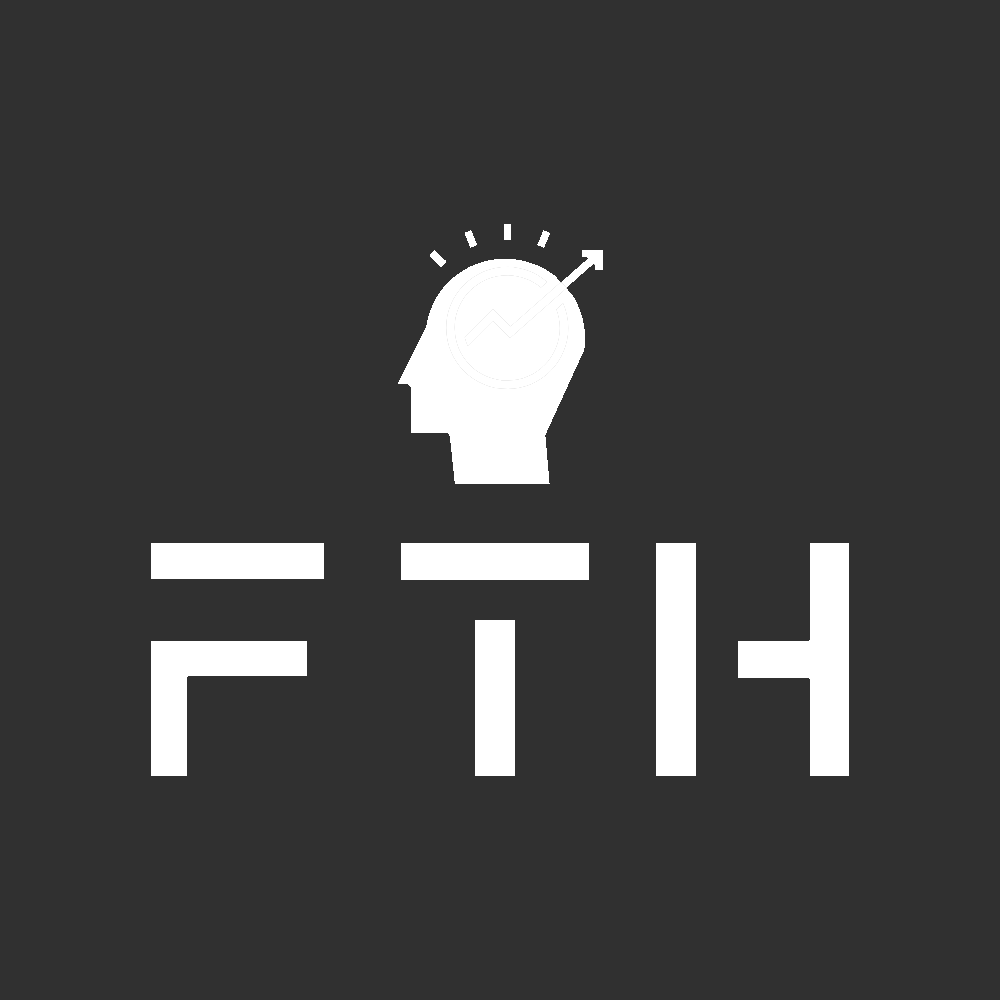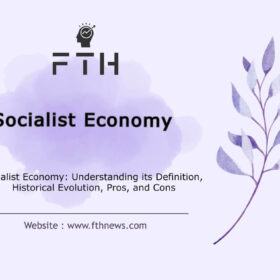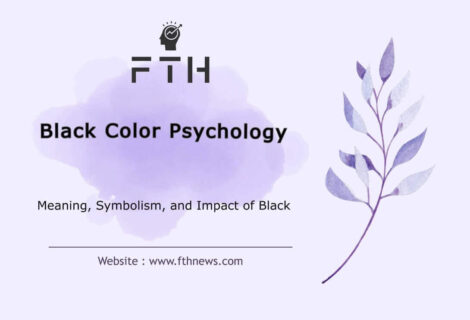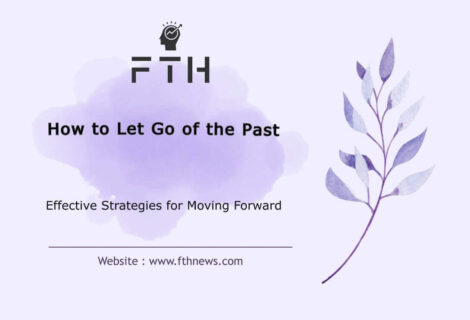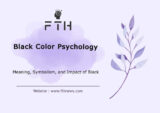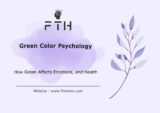
What I Wish I Knew When I Was 20: A Guide to Life’s Challenges
What I Wish I Knew When I Was 20 , Every human being is born like a blank slate, a raw flash memory with infinite capacity. As individuals learn and navigate life through experiences, the once limitless raw volume gradually diminishes. However, the reality is that the opportunity of life is finite, while the knowledge and lessons to be gained seem boundless. Complicating matters further, the inevitable confusions and mistakes along the way can deprive us of precious time and opportunities.
In the face of these challenges, the wisdom derived from the experiences of others becomes an invaluable resource. It serves as a conduit for distilling years of life into a few succinct sentences, providing us with essential insights. In this blog post, we will delve into the key takeaways from the book “I Wish I Knew When I Was 20” by Tina Seelig, exploring her sage advice on navigating the complexities of life. Stick around as we unravel the wisdom encapsulated in her words.
Challenge the Limits: What I Wish I Knew When I Was 20
While our minds possess incredible power, they often operate within self-imposed boundaries. These limitations are the result of our own expectations, such as assuming we can’t earn more than our monthly income or solve a long-standing problem in a short amount of time. It’s not a sign of mental weakness but rather a lack of confidence in our own capabilities. By underestimating our potential, we inadvertently corner ourselves, allowing life’s challenges to deliver relentless blows.
Empowering ourselves involves altering our mental attitude. Instead of succumbing to “I can’t” and “it won’t be possible,” adopting a mindset of “maybe it will happen, and what if it does?” opens doors to prosperity, peace, and a life filled with excitement.
In the Challenge of Life, Beware of Detours:
Changing our mental outlook doesn’t guarantee a straightforward path to success. It’s not about finding the right answer immediately; rather, it’s acknowledging the multitude of potential paths before us. Life’s journey, if self-directed, becomes a personalized experience, brimming with surprises, opportunities, threats, challenges, and turning points—all leading to the destiny we’ve beckoned into our lives.
Imagine this life as a grand puzzle, each piece representing a decision or action. Your efforts are focused on finding the right pieces and fitting them into their designated places. The enormity of the puzzle reflects the complexity of your journey, demanding more effort and dedication.
Some individuals opt for several small puzzles instead of tackling one substantial challenge. The allure of completing one game and embarking on a new adventure outweighs the prospect of solving a singular, larger puzzle.
In both approaches, distinct features and worlds unfold. There is no absolute right or wrong path in life; it’s about how you feel and the quality of the results derived from your efforts. Whether you choose a path strewn with numerous challenges or opt for a series of smaller victories, the judgment lies in your satisfaction and the impact on your life’s narrative.
You Don’t Need a Juicer to Be Creative: What I Wish I Knew When I Was 20
A common misconception hindering creativity in the face of life’s challenges is the belief that we require a guide or coach to unlock innovative solutions, deeming it a necessary and proper approach.
Contrary to this notion, creativity is not a force that only emerges under external pressure; it doesn’t necessitate coercion of our mind and soul. Consider yourself not as a seed awaiting extraction in a distiller, but as a human whose creativity thrives on freedom and the dismissal of limitations.
History reveals that some of the greatest painters produced their most memorable works when liberated from mental constraints, creating solely for the sake of their own hearts. Likewise, impactful texts and novels often emerged when authors activated the “free writing” button in their minds, expressing the unfiltered contents of their busy thoughts without concern for external factors.
This mindset often stems from self-doubt, fear of life’s challenges, and a penchant for conscious limitations. The solution is straightforward: target small challenges and employ your creativity to overcome them. As your mind tastes the satisfaction of “doing” and “finishing,” it transforms into a stepping stone towards more significant challenges.
Remember, creativity springs from your desire to solve problems. Viewing problems as solvable challenges or rewarding puzzles shifts your fears and anxieties into a compelling drive to discover creative solutions.
You might protest, “How can I love my problem? Problems are not lovely.” Admittedly, problems themselves may not be endearing, but envisioning your life’s transformed state after overcoming these challenges is truly captivating. When faced with problems, visualize a future without them, and you’ll find the enthusiasm and motivation needed to resolve them.
Use Your Own Rules When Meeting Life’s Challenges:
From childhood, every individual is inundated with an unending array of societal norms and regulations, dictating everything from the appropriate way to greet someone to the intellectual boundaries one should adhere to. However, the true breakthrough in life occurs when you defy these established norms and craft your own set of rules. This is when you, as a human being, carve out a unique space for your thoughts and confront life’s challenges on your own terms.
Establishing personal rules doesn’t imply disregarding societal norms or causing harm to others. Instead, it encourages thoughtful consideration before making decisions, allowing you to scrutinize choices through your own lens.
Furthermore, it’s crucial to recognize that sometimes, the internal rules we impose on ourselves can be as restrictive as external laws. Identifying and challenging these self-imposed limits can open the door to creativity, new opportunities, and a transformative way of life.
Consider a few examples of these internal constraints:
- Do not share your thoughts with others. They might mock you or steal your ideas.
- Conform to societal expectations. Don’t stand out.
- Avoid contemplating impossible dreams; be realistic.
- Always conform to the group; don’t risk rejection.
- Exerting too much effort is seen as greed. Be content with what you have.
- Accept your destiny; don’t fight it. Surrender.
- Conform to societal norms; don’t be different.
Numerous individuals have demonstrated that breaking such internal rules not only yields remarkable results but is often a necessary step for personal progress. Therefore, there is no need to fear breaking these self-imposed restrictions. In my perspective, envisioning yourself at the age of 99, brimming with regret and sorrow for not daring to pursue what you truly desired, is far more daunting than the risks associated with breaking these rules. Embrace the opportunity to shape your own narrative and forge a path that aligns with your authentic self.
Just Do It: What I Wish I Knew When I Was 20
Creating a plan and strategizing are tasks that, with a bit of research and investigation, anyone can manage. However, what often holds individuals back from the threshold of success is a reluctance to take action.
Interestingly, some people harbor a unique excuse for their inaction—they await permission. It’s as if they’ve been conditioned to seek approval from others before venturing into new territories. To avoid being easily swayed by the opinions of others and to prevent your life from being dictated by external forces, it’s crucial not to seek permission for pursuing new endeavors.
Many individuals are conditioned to believe that if they couldn’t accomplish something or even fathom attempting it, others shouldn’t either. This mindset is rooted in their own limitations, and according to their mental rules, no one else should deviate from these perceived constraints.
Fortunately or unfortunately, opportunities don’t linger, awaiting permission. They operate in binary fashion: either you seize the opportunity or you relinquish it to someone else who is more eager and fearless. The reality is that waiting for validation or permission is a luxury opportunities seldom afford. The decisive factor in whether you succeed or surrender your chance often hinges on your willingness to take action in the face of uncertainty. So, when opportunities arise, remember, it’s not about waiting for permission; it’s about seizing the moment and making things happen.
Listen to Your Heart: What I Wish I Knew When I Was 20
Fundamentally, as humans, we often go to great lengths to avoid heeding the call of our hearts, distorting its message because we believe that listening to our inner voice won’t sustain us. In doing so, we engage in internal battles for years, subjecting ourselves to tasks we dislike, grappling with life’s challenges, and ultimately squandering our precious time on endeavors that bring us no fulfillment.
Occasionally, life may jolt us, causing us to fall to the ground. In that moment of impact, a sudden silence envelops us, and what emerges is the sound of our inner voice. It’s during these moments of clarity that we come to our senses, realizing, “The path isn’t astray after all!” It’s an intriguing realization, but why follow such a convoluted path to listen to your heart?
Imagine yourself at the age of 99, with only a year left until your 100th birthday. How would you feel? What regrets would smolder in your heart, emitting sighs from your very being? Consider what advice your 99-year-old self would offer your present self. This exercise serves as a powerful tool for navigating life’s decisions.
Before making any choice or taking any action, contemplate your 99-year-old self. Ask yourself if the decision at hand aligns with the life you’d want to look back on without regret. This perspective can guide you in making choices that resonate with your deeper aspirations, ensuring that each decision is a step toward a life well-lived. After all, you can’t afford to waste time on actions that won’t contribute to your ultimate fulfillment.
Riskiness Is Not Genetic or Uniform: What I Wish I Knew When I Was 20
The propensity for risk-taking is not a genetically predetermined trait, nor is it consistent across all aspects of an individual’s life. People often exhibit varying levels of risk tolerance depending on the specific context. For instance, an investor in the stock market might willingly take risks with controversial shares, anticipating potential losses, yet they might be unwilling to take risks in physical activities like skydiving or public speaking.
Attempting to categorize individuals as inherently risk-taking or risk-averse based on one aspect of their lives oversimplifies the complex nature of human behavior. It is a mistake to assume that individuals who embrace risk in one area are universally more successful than those who prefer caution in another.
A more nuanced approach involves examining different facets of our lives to gauge the overall extent of our risk-taking tendencies. This comprehensive understanding can prove invaluable when faced with significant decisions, offering insights that contribute to more informed choices.
It’s crucial to recognize that risk-taking is not a one-size-fits-all trait; rather, it is context-dependent. Assessing our own risk tolerance across various domains enables us to make well-rounded decisions that align with our values and goals.
Ultimately, drawing from the experiences of those who have navigated similar paths provides a valuable resource for anticipating risks, strategizing for life’s challenges, and making substantial decisions. Learning from the diverse experiences of others allows us to refine our risk assessment skills and make more informed choices as we navigate the complexities of life.
Choose Between Being a Fan and Being an Enthusiast:
In our lives, we all harbor aspirations and dreams that ignite passion within us at the mere thought of pursuing them. Some envision becoming internationally acclaimed chefs, drawing people from around the globe to savor their culinary creations. Others are enamored with singing, music, football, or even delving into the complexities of financial markets. However, not everyone who harbors such dreams succeeds in turning them into reality.
The mismatch between passion and abilities often becomes a stumbling block. Consider the aspiring soccer goalkeeper whose physical attributes, such as height, weight, and endurance, may not align with the demands of the position.
Alternatively, there are individuals who hold a deep fondness for certain endeavors in their minds but lack the genuine enthusiasm required when it comes to taking tangible actions. Take, for instance, someone aspiring to be the head chef of a prestigious five-star hotel but who recoils at the idea of spending hours at the stove, intricately working with food.
Recognizing the extent of our genuine interest in various subjects is essential to avoiding a life spent chasing impractical dreams. If we find ourselves truly passionate about something but incapable of shouldering the practical responsibilities that accompany it, we may be nothing more than ardent fans of that particular pursuit, lacking the true enthusiasm necessary to turn it into a vocation. In such cases, acknowledging the distinction between being a fan and an enthusiast empowers us to make realistic choices that align with our capabilities and true aspirations.
Passion and Experience: What I Wish I Knew When I Was 20
While some individuals may appear to possess innate talents or an indescribable interest in a particular subject from a young age, the reality is that such pure talents are quite rare. Often, people and parents assess their own or their children’s talents based on this limited criterion, overlooking the fact that the majority of individuals discover their abilities through a continuous process of acquiring diverse experiences.
Consider the child who draws before speaking or plays the piano before learning to walk—examples of what is perceived as pure talent. However, relying solely on early manifestations of abilities can lead to a narrow understanding of one’s potential. Unfortunately, this perspective may cause individuals to label themselves as gifted or untalented based on whether their abilities surfaced in childhood.
The truth is that many latent talents lie within individuals, waiting to be unearthed through the accumulation of varied experiences. For instance, if you believe you have no talent in music, have you ever tried your hand at playing a musical instrument? If you think visual arts are beyond your capabilities, have you ever attempted to create something with your own hands, like a clay mug?
Experience is the catalyst that reveals hidden talents. If you haven’t yet discovered your talent, it doesn’t mean it doesn’t exist; rather, it suggests that you haven’t amassed enough diverse experiences to unlock and nurture your latent abilities. The continuous flow between passion and experience is the key to unleashing the full spectrum of your potential.
You Have to Get Lucky: What I Wish I Knew When I Was 20
The concept of luck is a complex and often elusive subject. Many individuals seek luck throughout their lives, believing that obtaining it leads to success, happiness, and overall well-being. However, a closer examination of life’s challenges and the unfolding events suggests a different perspective.
Contrary to the notion that luck is a mystical force that bestows favorable opportunities upon us, it is better understood as a product of our efforts, the depth of our passion, and our determination to achieve success.
Attributing the outcomes of our continuous day-and-night efforts solely to luck may not be entirely fair. Instead, it is the amalgamation of our passion, interests, dedication, and sense of purpose that alters the energy we project into the universe. Consequently, unexpected encounters with individuals we never imagined meeting, finding ourselves in unique situations, and receiving job offers that seem to materialize from thin air become part of the narrative.
This journey commences with us, driven by our initiative, propelling us forward and immersing us in incredible adventures. The energy we invest in the pursuit of our goals has a transformative effect, attracting opportunities and experiences that challenge the boundaries of what we thought possible. Luck, in this sense, is a dynamic force that responds to the power we give it, shaping our path and infusing our lives with unexpected and rewarding moments.
Build Stone Bridges Between Yourself and Others:
Throughout our lives, we weave a complex network of connections with others, creating bonds that range from sturdy and enduring to fragile and delicate. These invisible threads, over time, transform into bridges that link us with those around us.
It’s not uncommon, however, to encounter situations where we feel compelled to sever certain connections, perhaps burning bridges to eliminate any possibility of future communication. Conversely, there are instances when we decide to fortify these bridges, transforming them from mere wooden structures into enduring stone pathways that can withstand the tests of time.
The bridges that form between individuals serve as the pathways upon which we traverse more than others. Therefore, it is crucial not to hastily decide to dismantle these connections. Even if a relationship with a person or company seems as precarious as a wooden bridge, preserving it may prove more beneficial than opting to burn it down.
In the dynamic and ever-changing landscape of life, nothing is absolute or eternal. There may come a time when you choose to dismantle a stone bridge with a sledgehammer, repurposing its pieces to reinforce a fragile wooden structure. Thus, the wisdom lies in constructing as many bridges as possible and only resorting to their destruction when no other viable option remains.
In essence, building stone bridges between yourself and others symbolizes a commitment to enduring connections, fostering friendships, and cultivating collaborations that can stand the test of time. It’s a reminder that the strength and longevity of our relationships depend on the care and consideration we invest in constructing and maintaining these bridges throughout our journey.
Be Generous in Giving Thanks or Asking for Forgiveness:
Life’s challenges are a continuous ebb and flow of various experiences, ranging from good days filled with memorable adventures to challenging situations that test our resilience. Our attitude plays a pivotal role in shaping these days, turning them into positive and memorable moments or, conversely, into painful and uncomfortable episodes.
Amidst this fluctuating journey, we encounter individuals who act as angels, offering invaluable help, or others who, in the worst of times, may seem like adversaries, casting us as the villains in our own stories. The reactions we exhibit during these moments might be puzzling and unacceptable, driven by the intense emotions of the situation. However, reflecting on our behavior after the storm has passed becomes crucial.
If someone has extended a helping hand like an angel, it is essential to express gratitude sincerely and warmly. On the flip side, if our actions have caused harm, it becomes imperative to set aside pride, apologize with genuine remorse, and admit our mistakes.
Gratitude and apology, these two human behaviors, transform us into individuals deserving of the best opportunities and the company of remarkable people. Timely expressions of thanks and apologies are the keys to reaping the blessings of this world.
Delaying expressions of gratitude diminishes their impact, and neglecting to listen to the apologies and regrets of others deepens the harm inflicted on them. Acting promptly and sincerely is the key to embracing the positive energy of gratitude and forgiveness.
What was the author’s main message in the book “What I Wish I Knew When I Was 20“?
In “What I Wish I Knew When I Was 20,” Tina Seelig emphasizes the importance of experiential learning beyond academic education. Drawing from her experiences training creative entrepreneurs, she believes that practical knowledge is essential for a successful presence in society. The book serves as a guide to share these valuable insights and tips with others, emphasizing the significance of continuous learning and adaptability in navigating life’s challenges.


